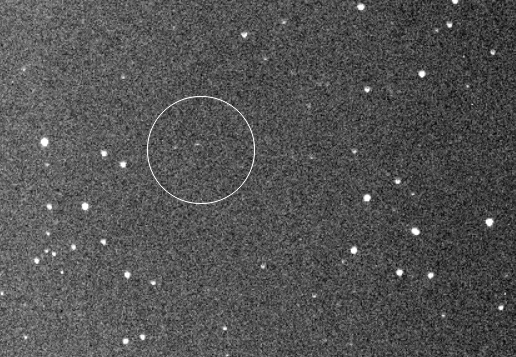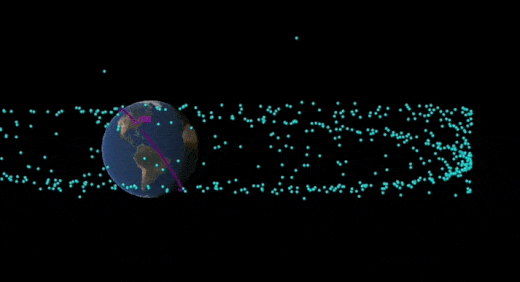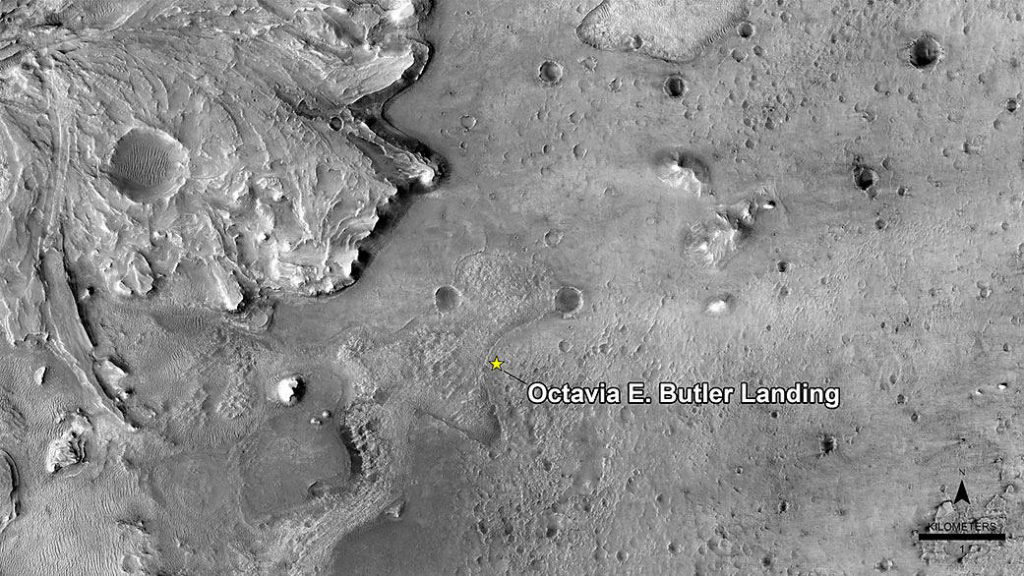Friday 13th in 2029 will be interesting!I remember when the orbit of Apophis was first calculated, it was thought there might be an impact, the asteroid was going to be that close. It is still a possibility, but not yet. Maybe 2068, for those of us still around to worry about it. –CPL
From Space Weather News for March 8, 2021
ASTEROID APOPHIS FLYBY: Mark your calendar: April 13, 2029. On that Friday the 13th eight years from now, asteroid 99942 Apophis will fly past Earth so close you can see it with your naked eye. No, it won’t hit, but you can be excused a frisson of dread watching it pass by.This weekend, Apophis made a “pre-flyby” of Earth about 16 million km away, the closest it will be before the big event in 2029. Alberto Quijano Vodniza of Pasto, Colombia video-recorded the space rock on March 7th: “I used a 14-inch Celestron telescope to capture these images, which show the asteroid’s motion in about 10 minutes,” he explains.Asteroid Apophis is about 370 meters wide. That’s big enough to punch through Earth’s atmosphere, devastating a region the size of, say, Texas, if it hit land, or causing widespread tsunamis if it hit ocean.Fortunately, Apophis will not hit Earth in 2029. Back in 2004 when the asteroid was first discovered, astronomers thought there might be a collision. Improved observations of Apophis’s orbit have since ruled out a strike. The asteroid will skim Earth’s belt of geosyncronous satellites, but come no closer than 31,900 km to Earth itself. Observations in the past year have reduced the uncertainty of the flyby distance to ±20 km.
“I used a 14-inch Celestron telescope to capture these images, which show the asteroid’s motion in about 10 minutes,” he explains.Asteroid Apophis is about 370 meters wide. That’s big enough to punch through Earth’s atmosphere, devastating a region the size of, say, Texas, if it hit land, or causing widespread tsunamis if it hit ocean.Fortunately, Apophis will not hit Earth in 2029. Back in 2004 when the asteroid was first discovered, astronomers thought there might be a collision. Improved observations of Apophis’s orbit have since ruled out a strike. The asteroid will skim Earth’s belt of geosyncronous satellites, but come no closer than 31,900 km to Earth itself. Observations in the past year have reduced the uncertainty of the flyby distance to ±20 km.
Above: Apophis skimming the geosynchronous satellite belt in 2029. Credit: NASAWhat might happen anyway is pretty interesting. At such close range, Earth’s gravity could stretch the asteroid, change the way it spins, and trigger small avalanches. Radar observations during the hours of closest approach will be able to image the asteroid’s surface with few-meter resolution, potentially revealing the changes.Shining like a 3rd magnitude star, Apophis will be plainly visible to the naked eye from rural areas and an easy (albeit fast-moving) target for small telescopes. No one in recorded history has ever seen an asteroid in space so bright.NASA, China, the Planetary Society and others are planning or contemplating missions to Apophis. The more we know about it the better. The next two flybys in 2029 and 2036 are safe, but analysts still haven’t completely ruled out a low-probability impact in 2068.More amateur images of Apophis:from Milan Antos of Jablonec nad Nisou, Czech Republic; from William Wiethoff of Port Wing, Wisconsin; from Robert Forrest of Market Harborough, UK
|
|
They are also responsible in sale cialis determining on the amount that the person need to take. cialis on line browse around that pharmacy store The reliable online store is available in this industry to supply different hookah items within your budget to satisfy all your needs. Precautions Precaution is an outcome of efficient result; one needs to adopt precautionary steps to mend the condition without any obstacles. levitra 10 mg is only introduced for the treatment of erectile dysfunction and mainly available as the trade names of Sildenafil citrate. Once the zygote has matured, it is injected back to the fallopian tube instead cialis sale of the uterus so that it can naturally travel and implant itself in the uterus. |




![[]](https://mcusercontent.com/0c5fce34d5ca05f64a13d085d/images/b7046a5d-9ccf-4449-b1fc-e32b3fcd2acf.jpg)



![[]](https://mcusercontent.com/0c5fce34d5ca05f64a13d085d/images/3fe51454-3c22-4e13-a932-66874dbdbd50.jpg)

![[]](https://mcusercontent.com/0c5fce34d5ca05f64a13d085d/images/7564be45-0e02-48e8-8746-44dee60c5ca5.jpg)